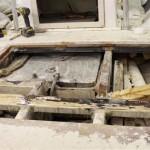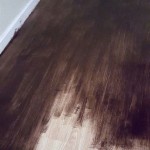1/2 Inch Red Oak Hardwood Flooring: A Comprehensive Guide
Red oak hardwood flooring remains a popular choice for homeowners and builders due to its durability, affordability, and classic aesthetic. Among the various thicknesses available, 1/2 inch red oak offers a specific set of advantages and considerations that warrant careful examination before making a purchase. This article provides a comprehensive overview of 1/2 inch red oak hardwood flooring, covering its properties, benefits, installation considerations, maintenance requirements, and how it compares to other flooring options.
Red oak is a readily available and relatively inexpensive hardwood species. Its grain pattern is distinctive, featuring prominent open pores that accept stain well, allowing for a wide range of customizable finishes. The reddish undertones inherent in the wood give it a warm and inviting appearance, seamlessly complementing a variety of interior design styles. The 1/2 inch thickness provides a balance between cost-effectiveness and structural integrity suitable for certain applications.
Key Point 1: Advantages of 1/2 Inch Red Oak Flooring
The decision to opt for 1/2 inch red oak flooring presents several advantages over other thicknesses or flooring materials. These benefits are often the deciding factor for budget-conscious homeowners or for those working within specific construction constraints.
Cost-Effectiveness: One of the primary advantages of 1/2 inch red oak flooring is its affordability. Compared to thicker planks, such as 3/4 inch, the reduced material usage translates to a lower purchase price. This cost saving can be significant, especially when covering a large area. Furthermore, the ease of milling and greater availability of red oak lumber, when compared to some exotic hardwoods, contributes to its overall lower cost.
Compatibility with Subfloors: The 1/2 inch thickness is often compatible with existing subfloors, particularly in remodeling projects. It can minimize the need for extensive subfloor modifications or leveling, which can add significantly to the overall project cost and timeline. This is especially important in situations where ceiling heights are a concern, as adding a thicker floor can reduce headroom.
Ease of Installation: While proper installation is always crucial for hardwood flooring, 1/2 inch red oak can be easier to handle and install, especially for experienced DIYers. The lighter weight of the planks compared to thicker options makes them easier to maneuver and position during installation, reducing the physical strain on the installer.
Suitable for Radiant Heating: While not always ideal, 1/2 inch red oak can be a viable option for installation over radiant heating systems, provided specific precautions are taken. Its thinner profile allows for better heat transfer compared to thicker hardwood flooring options. However, it's crucial to consult with both a flooring professional and a radiant heat system specialist to ensure compatibility and proper installation techniques are followed to prevent warping or gapping due to changes in humidity and temperature.
Acceptable Durability: While not as robust as thicker flooring, 1/2 inch red oak possesses acceptable durability for moderate traffic areas. Its density and hardness, measured on the Janka hardness scale, provide adequate resistance to everyday wear and tear, such as scratches and dents. Regular maintenance and the use of protective measures, such as rugs and furniture pads, can further extend its lifespan and maintain its appearance.
Key Point 2: Considerations Before Installation
Despite its advantages, 1/2 inch red oak flooring isn't a universal solution and requires careful consideration of various factors prior to installation. Ignoring these factors can lead to performance issues and premature deterioration of the flooring.
Subfloor Preparation: Proper subfloor preparation is paramount for a successful 1/2 inch red oak flooring installation. The subfloor must be clean, dry, level, and structurally sound. Any unevenness or inconsistencies can result in flexing or squeaking of the flooring. Self-leveling compounds may be necessary to correct imperfections. Moisture content testing of both the subfloor and the hardwood planks is critical to prevent future warping or cupping. The moisture content of the wood and the subfloor should be within an acceptable range, typically recommended by the flooring manufacturer.
Traffic Level: Consider the anticipated traffic level in the area where the flooring will be installed. While 1/2 inch red oak can withstand moderate traffic, it may not be the best choice for high-traffic areas, such as hallways or entryways, where thicker, more durable options might be preferable. For these areas, exploring hardwood species with higher Janka hardness ratings may be warranted.
Span and Support: The span, or distance between supporting joists, beneath the subfloor should be adequate to support the weight of the flooring and anticipated loads. Insufficient support can cause the floor to flex and potentially damage the hardwood planks. Consult with a structural engineer or experienced contractor to ensure the support structure is adequate, particularly in older homes where the existing framing may not meet current building codes.
Acclimation Period: Proper acclimation of the hardwood planks is crucial before installation. This involves allowing the wood to adjust to the temperature and humidity conditions of the installation environment. The acclimation period can vary depending on the climate and the specific product, but it typically ranges from several days to a week or more. Failure to properly acclimate the flooring can lead to expansion or contraction issues after installation, resulting in gaps or buckling.
Installation Method: The appropriate installation method depends on the subfloor type and the specific product. Common methods include nailing, gluing, or floating. Nailing is generally preferred for solid hardwood flooring over wood subfloors, while gluing may be necessary for concrete subfloors. Floating installations are often used with engineered hardwood floors. Consult the flooring manufacturer's recommendations for the proper installation method.
Key Point 3: Maintenance and Longevity
Proper maintenance is essential to prolong the life and maintain the appearance of 1/2 inch red oak flooring. Regular cleaning and preventative measures can significantly reduce wear and tear and preserve the beauty of the wood.
Regular Cleaning: Sweep or vacuum the floor regularly to remove dirt, dust, and debris that can scratch the surface. Use a microfiber mop for cleaning, and avoid using excessive water. Damp-mop the floor with a wood floor cleaner recommended by the flooring manufacturer. Avoid using harsh chemicals or abrasive cleaners, as these can damage the finish.
Humidity Control: Maintaining consistent humidity levels in the home is crucial to prevent expansion or contraction of the hardwood flooring. Use a humidifier during dry winter months and a dehumidifier during humid summer months to maintain a relative humidity level between 30% and 50%.
Protective Measures: Place rugs or mats at entryways to trap dirt and moisture. Use furniture pads under the legs of furniture to prevent scratches and dents. Avoid wearing shoes with cleats or high heels on the hardwood floor. Clean up spills immediately to prevent staining or water damage.
Refinishing: Over time, the finish on 1/2 inch red oak flooring may become worn or scratched. Fortunately, solid hardwood flooring can be refinished to restore its original appearance. Refinishing involves sanding down the existing finish and applying a new coat of stain and sealant. The number of times a hardwood floor can be refinished depends on the thickness of the wear layer. While 1/2 inch flooring might allow for fewer refinishing cycles compared to thicker options, proper maintenance can minimize the need for frequent refinishing.
Professional Inspection: Periodic inspections by a qualified flooring professional can help identify potential problems early on. They can assess the condition of the flooring, identify moisture issues, and recommend appropriate maintenance or repairs. This proactive approach can prevent minor issues from escalating into more significant and costly problems.
Ultimately, the decision of whether to use 1/2 inch red oak hardwood flooring requires careful consideration of the specific project requirements, budget constraints, and desired aesthetic. By understanding the advantages and considerations outlined above, homeowners and builders can make an informed decision and ensure a successful flooring installation that provides years of enjoyment.

1 2 X Random Length Select Better Red Oak Flooring

1 2 X Unfinished Hardwood Floors Red Oak Flooring

Red Oak Hardwood Flooring At Com

1 2 X Random Length Common Red Oak Flooring

Henry County Hardwoods Unfinished Solid Red Oak Hardwood Flooring Clear Grade 3 4 Inch Thick X 1 2 Wide Square Foot Chicago

Red Oak Rustic Grade Prefinished Solid Hardwood Flooring Floor Depot

1 2 X 3 4 Common Red Oak Unfinished Nature Wood Floors

Unfinished Red Oak 3 Common 2 1 4 Solid Hardwood Xulon Flooring Woodwudy Whole

Henry County Hardwoods Unfinished Solid Red Oak Hardwood Flooring 1 Common 3 4 Inch Thick X 2 Wide Square Foot Chicago

Red Oak 2 Common Grade Unfinished Solid Hardwood Flooring Floor Depot
Related Posts








